The Polar Look Keo Power System is the first pedal based power meter to make it to market, meaning, you can actually go out and buy one. Announced nearly two years ago, the units finally started trickling out into the marketplace over the past few months.
Polar sent out a unit back in the spring for me to check out and evaluate. Since then, I’ve been moving it between my bikes and giving it quite the workout. In doing so, I’ve got a pretty good grasp on how the unit works and where it succeeds as well as falters. The question is, does it justify the high price – and, are pedal based power meters the future? Well, stick around to find out.
Because I want to be transparent about my reviews, as I mentioned above Polar sent me this pedals and head unit as a trial unit. Once that period elapsed, I sent the whole beaten and broken box back to the folks in New York (went back on Monday). Simple as that. Sorta like hiking in wilderness trails – leave only footprints. If you find my review useful, you can use any of the Amazon links from this page to help support future reviews.
Lastly, at the end of the day keep in mind I’m just like any other regular triathlete out there. I write these reviews because I’m inherently a curious person with a technology background (my day job), and thus I try and be as complete as I can. But, if I’ve missed something or if you spot something that doesn’t quite jive – just let me know and I’ll be happy to get it all sorted out. Also, because the technology world constantly changes, I try and go back and update these reviews as new features and functionality are added – or if bugs are fixed.
Unboxing:
First up, the outside of the box. Size-wise, it’s like someone took a shoe box and sat on it. Roughly the same length, and a touch bit wider, but way thinner.
When you crack it open, you’ll find a two level apartment. The upper level shows off the expensive parts, and the lower internal level is where the cheap stuff is (tools, manual, spare parts, etc…).
First up – the most critical and expensive piece, the pedals themselves:
Obviously, there are two pedals. One for the left side, and one for the right side.
Then we’ve got the transmitter pods. These connect through the pedal mounting hole in your crank arm to the pedal, and then transfer data via the small pins you see. Ultimately this data is then transmitted wirelessly between the two pods and up to the head unit.
As you can see, there are designated left and right pods. This would be differentiated by the big ‘L’ and ‘R’. The left pod is the master pod, and the one that you specify crank length on. It’s also the one that transmits to the head unit. Only the left pod has a button on it, the right pod does not. Both have battery compartments though.
Next up are the Look Keo cleats. If you’ve already got Look Keo cleats on there, there’s no need to use these.
Here’s one last shot of all the important goods:
Hidden in the lower compartment of the box is the manual and the tools to install the power system:
There are three tools, one of them fairly unique. The first not-so-unique one is a hex wrench, which simply fits into the backside of the pedal to tighten/loosen it.
Then we’ve got a small pedal wrench. You’ll use this with either of the two other tools to apply pressure and lock the pedal in place.
And finally, the strange looking tool. This is also a hex wrench, but it’s designed so that you can align it with the crank arm to try and get the perfect fit. I’ll talk more about this later. While it’s a semi-useful tool, I can think of some much better designs that would accomplish the job with less confusion and more accuracy.
You can see below how it fits into the pedal – but we’ll talk more about how you really use to line things up.
In order to complete the installation, you’ll need a few baggies of small parts, which include o-rings and spacers. You probably won’t use them all, and there’s some spares in there.
Last but not least on the power meter side is the calibration certificate. At present, this isn’t terribly useful to be honest. Though Look has talked in the past about adding more calibration information.
Finally, in the event you also picked up a CS600X, here’s a quick unboxing photo or two from that. Since that unit isn’t really the focus of this review (except as applicable to power measurement, which I’ll dive into later), I’m going to keep it to just a handful of photos.
As you can see above, there’s a heart rate strap, a CS600X attached to the mount. Then a WIND speed sensor, as well as a couple of mounts for that, and then finally, just sneaking out of frame on the right side of the lower photo is the IrDA USB stick to wireless transmit your workout data to your computer.
Battery:
I just wanted to briefly call out that the Polar power system uses two CR2354 batteries, one in each pod. They are easily accessible by just twisting the cap of the transmitter pod about 20*. The cap then pops off, and you can pry out the battery.
One tiny item to beware of though is to ensure you’ve locked the cap back in place on the pedal pod – otherwise it could fall off, and outside, that would suck a lot.
Installation:
I’m become really good at installing the Polar power system. However, that doesn’t mean it’s entirely easy, nor quick. It’s like flipping pizza dough in the air – it just takes a lot of practice.
Installing the pedals requires the three tools included in the box. Though ‘requires’ is a bit of a strong word. You can get by without them, and in fact, I found that over time I could actually install it faster and with more accuracy than with them. Nonetheless, here’s the tools at hand:
As noted earlier, you’ve got a beastly hex wrench, a twirly-twisted hex wrench, and a pedal wrench. The installation and removal of the pedals will require the simultaneous use of two of these tools at all times.
First though, deal with getting your cleats on your shoes (if changing cleat types). I recommend this first for two reasons. One, if you have issues with getting the cleats on/off your shoes, at least you can stop before you disassemble your bike setup and spend time on it. And secondly, it gives you a chance to ‘warm-up’ before the main game.
As far as putting the cleats on, I won’t bore you with detail here. It’s fairly straight forward. You unscrew some screws on your old cleats, and screw the new screws and cleats in. No manual required.
Once you have that settled, it’s time to get cooking on the pedals themselves. Budget an hour for your first attempt. If you get it done in less time, go get an ice cream cone or something. Oh, and secondly, you’re going to likely want to do this on a trainer, so you can not only have the bike in a stable location – but also test it out easily afterwards.
With that, first we’ll start with getting the pedals on. For the most part, this piece is fairly normal. You’ll simply insert them into the crank arm thread and then work your way in.
The one catch is that the pedal axle needs to ultimately be flush (or pretty close to flush) with the back of the crank arm. Meaning it can’t be sticking out a bunch. See below how it’s roughly flush along the backside.
Now you see how I’ve got the funky wrench in there. Notice how that wrench is aligned with the crank arm. This is supposed to allow you to line things up evenly. In reality, it can sometimes cause more confusion. At the end of the day, only three things matter:
1) You must have the little notch at the end of the pedal axle pointed FORWARD and level
2) You must have the pedals be tight (using both the funky hex wrench and the pedal wrench)
3) You must have the pedal axle not extend beyond the crank arm’s back (there are spacers to help here).
On #1 above, the notch I’m referring to is visible as you rotate the pedal axle in (see below at 3PM position). This has to be level and point forward on the bike, at the 3PM or 9AM position (if looked at from the other side of your bike):
It has been said by others that if this is off by even a few degrees, it’ll affect calibration of the unit. I can say that if it’s off substantially, the unit will simply error out and will give you error lights.
The above sounds easy on paper, but getting it right with all the spacers involved becomes a huge pita. Over time you’ll get really good at it. But initially it’ll take you a while, especially the first time on a given bike which may have different crank arm width requirements. I recommend doing one pedal at a time (fully), and then tackling the next one.
Once that’s all set, it’s time to add the pedal pods. Now you’ll notice there are two pods. They say left and right, but more importantly, they have a correct orientation. If not put on correctly, they will error out.
But here’s a trick to figuring out which way they go: The little channel where the zip tie goes will ALWAYS be on the inside of the crank arm (closest to your bottom bracket). If it were on the outer edge, it’d simply fall off over time, and that’d suck. See below (before zip tie) how the channel in the pedal pod is on the right side.
Note that if the pod doesn’t go in smoothly, it means that something is amiss. First validate that the pedal axle is flush against the crank arm. Then validate that the notch is correctly aligned. And then validate that the pod is on the correct side, and in the correct orientation. The pedal pod is designed so that it fits well one way (the correct way), and not so well other ways (the incorrect way).
Now, we’ll go ahead and add the zip tie. It’s really important that the zip tie be really tight. If not you may get dropouts later on.
Then simply repeat this process for the other side. The last and final step is to pair the unit together on the head unit, and specify the settings used within the manual for each supported bike computer. Because the older Polar head units don’t know anything about the left/right Keo system, you’re actually faking the older Polar chain based system – hence why some of the values don’t quite seem to align to a pedal based system (like chain width and length).
Calibration:
I wanted to call this category out specifically, despite the fact that there’s really nothing to call out. The Polar power system does not support any end-user driven calibration options or parameters. There exists only one on unit configuration option, which is specifying the crank arm length. This is done through the button that’s located on the left pedal pod.
The supported crank width/length/height limitations are as follows:
Crank Lengths Supported: 177.5mm, 177mm, 172.5mm, 170mm
Crank Width Maximum: 16mm
Crank Height Maximum: None
You only need to specify the crank length however, via the little button, which will illuminate your selection and save it from there on out. Once you’ve set it once, you’re good to go for life:
Calibration and system validation occurs each time power on the unit, at which point the unit will validate all parts are reachable, and at least connected. Additionally, you shouldn’t be spinning the cranks, as it does a very basic calibration here. Ideally this is done prior to stepping on the bike. Note that if you do add movement to the bike during the calibration procedure, and it accepts the calibration – you can get odd data (thus graphs) like the below, showing how the balance is incorrect (see how the orange is completely off balance):
But again, there is no method to validate the calibration values, nor to change or check them.
Day to day use:
Once you’ve got the unit installed, using it day to day is fairly straight forward. In order to start using the unit you’ll merely need to press and hold the button on the left transmitter pod. Only for a second or two, otherwise you’ll kick it into configuration mode if you hold it too long.
Once that’s done the left pod unit will start blinking. It does a quick check of all the components (basically, are both transmitter pods there and both pedals there), and then will go into a steady blink while it’s on.
At this point, you can go ahead and start up your Polar head unit. Assuming you’ve already paired it – it’ll go ahead and find the power meter and connect to it. If you fail to remember to turn on the power meter first, the unit will remind you with a ‘Check power’ status message – both before pressing start as well as afterwards.
Once the connection is established, the unit will receive and display all four metrics: Left Power Percentage, Right Power Percentage, Total Power (watts) and cadence (RPM):
When you’ve completed your ride, the pedals will automatically power off after no movement for an extended period of time.
This is of note to triathletes, who will need to remember to start the pedals while in transition during T1. If you try and start them prior to the race, it’s unlikely the pedals will still be turned on by time you finish the swim and get back to your bike. In my case, I found this best to do when I first arrive at my transition rack. That way it can do the self-test while I’m dealing with getting my helmet on and things of the like.
Left/Right Power:
The biggest initial draw for many to the Keo power system is likely the ability to gather left/right power data. After all, this is relatively new to the mobile power meter market (it’s historically been available primarily in static/lab settings). However, one of the challenges with left/right power is how exactly to apply it in the course of normal training.
A lot of smart people (i.e., people who write books on the topic) have now been discussing it for a couple years (since the first announcements appeared), however, in general there isn’t a great consensus on how to realistically use this data in training. Meaning – how (if at all) does focusing on increasing your left power balance 4% help you? And, what’s the best way to do that?
Down the road, the ability for pedal-based systems to provide additional positioning information may make bike-fit a more precise science. For example, the ability to test that by moving the cleat 2cm towards the toe results in 15w of power gain. Or perhaps shifting towards the outer edge slightly results in increases. But we’re really not there yet today with guidance or analysis on how to process and take action on such data. No doubt it’ll come, it’s just not there today.
In general, there’s not yet a lot of great answers for normal day to day training or racing. However one area that a number of folks have found left/right power useful for is recovery from injury in a single leg. With historical data, one has a known established data point on where that leg used to reside power-wise, and this helps one folks on reaching that level again.
Further, with the ability to track left/right, you can see progress easily over time. Meaning that initially an injured leg first starting recovery may only contribute 15% left power, but a month later that could be 40% left power.
With all that background – let’s focus on how left/right power actually works technically. The unit measures and collections power at each pedal, for that leg. Meaning, left leg power gets measured by the left pedal, and right leg by the right pedal. That data is then sent to the pedal pods (the little things that hang off the cranks), via wired connection. From there, the secondary (slave) pedal pod transmits the data to the primary (master) pod, which is typically the left pod. The left pod then gathers the data from both units and transmits left/right power percentage, and total power.
The transmission from the master pedal to the head unit is done across Polar’s W.I.N.D. protocol. In fact, from a programming standpoint it was noted that the two companies split the work load. When I talked with them previously, they said that: “The axle software is very different to the pedal software. All communication between the pedal transmitter and the bike computer was made by Polar. Whereas the axle software was made by Look”.
Once the data is transmitted to the head unit, you’ll see left power percentage, right power percentage, and total power displayed on the unit. Below is an example of how it appears within the CS600X. You can see the middle two numbers are the power percentages (left and right), and the bottom number is the current wattage. The bottom right number is cadence. The top right is calories, based on the heart rate strap.
While using the pedals, I found that it picks up changing in left/right balance pretty easily. A very subtle shift in leg pressures makes it immediately obvious that you’re shifting your power output across legs. Further, if you go to one-leg pedaling, you’ll immediately see the drop in power.
Afterwards, when looking at the data, you can separate the two left/right channels and view them individually, or together on the same graph. Because the left/right data is always showed as a percentage (not wattage), the two legs are somewhat inverted mirror images of each other. But we’ll dive into this later on.
Keep in mind that many 3rd party sites don’t support left/right power today. I have found that TrainingPeaks does however, and if others find/know of others that do – drop a note in the comments and I’ll test it out with a few files and update here.
Cadence:
The Polar power system includes the ability to measure cycling cadence, via a magnet in the bottom pedal. This means that it is unnecessary to add a Polar WIND cadence sensor in order to gather cadence information.
Cadence is simply the measure of how often a given pedal rotates per minute. Expressed in RPM’s (Revolutions Per Minute), most cyclists tend to be around 90RPM (+/- about 10RPM), per leg. There’s tons of religious debate within the cycling community on the benefits (or lack thereof) of specific cadence values and/or ranges. At present, most folks tend to be the self-selected cadence typically ends up being the most efficient for cyclists. In other words, just ride.
From a measurement standpoint though, the magnet is at the bottom of the pedal, visible below:
This magnet then trips a sensor in the axle that’s located within the pedal body. When it does so, it’ll transmit that via the pod to the head unit for display and/or recording. Pretty clean and straight forward.
Compatible head units (bike computers):
Without question, the biggest singular challenge with the Polar power system is the current selection of cycling head units. Head units are the bike computers that can read the data from the Polar power system, without compatible head units – you’ll neither see your data, nor be able to record it.
Within the rest of the industry, power meters primarily use the ANT+ protocol, which means that consumers can choose between head units from any company they’d like (Timex, Garmin, CycleOps, Magellan, etc…), or tons of apps across iPhone and Android platforms. But, the Polar power system doesn’t use ANT+, and instead, uses the proprietary Polar W.I.N.D. protocol – which is only compatible with Polar devices.
Given this limiting of selection, Polar only offers two devices at present that are compatible with the Polar power system, the CS500 and CS600X. Both of these units have been around the block a while, and previously supported Polar’s older chain based power meter. Interestingly their triathlon focused unit (the RCX5) does not support the power meter, nor does it have plans to be updated to support it (there were initially some statements last year that it would, but those were confirmed by Polar to have been misspoken).
Polar sent over both head units units to try out, which I did. The functionality related to power meter use and recording though on both devices is essentially identical. Most of my time was spent with the CS600x, merely because it’s a bit smaller and fit a bit better on my handlebars.
The challenge with both units though is that from a power meter standpoint, they both suck. I wish I could apply fairy dust and sugar coat that somehow – but there’s no getting around it. The power meter features offered are at best ‘barely functional’ for the task at hand.
The sum total of options related to power meters data fields you can view on the CS600X unit are as follows:
Power (instant, watts)
Power left (instant, percentage)
Power right (instant, percentage)
Yes, that’s it.
To emphasis how small this is compared to the larger market, here’s what the Joule offers, as well as the Garmin Edge 500:
CycleOps Joule 2.0 Data Fields:
– Balance (Instant)
– Balance – 3s Avg
– Balance – 10s Avg
– Balance – 30s Avg
– Balance – Avg
– Balance – Lap
– Power (Instant)
– Power – %FTP
– Power – 3s Avg
– Power – 10s Avg
– Power – 30s Avg
– Power – Avg.
– Power – IF
– Power – Lap
– Power – Last Lap
– Power – Max
– Power – Max Lap
– Power – NP
– Power – NP Lap
– Power – NP Last Lap
– Power – TSS
– Power – W/kg
– Power – kJ
– Power Zone
Out of everything perhaps the biggest drawback is the lack of power smoothing. It’s instant power, which naturally fluctuates rapidly. Most power meter head units these days allow you to smooth the power over a 3-10 second average, making it far easier to hold given wattages.
From a recording standpoint, the Polar units lag behind as well. While they can and do record at 1-second intervals (which is good!), they can’t do so for very long. In my experience, I only got about 6 hours of recording time before I had to move the ride data to my computer (or delete it). This is enough for a century ride for competitive riders, but only if you remember to have a clean slate beforehand. When you compare this to other units, which typically can record hundreds of hours of data, it’s easy to become pained with the Polar head unit selection.
In my opinion, the current head unit options are the single biggest item holding back the ability for the Polar/Look power system to be competitive.
However, there is some positive news coming down the pipe here. Polar has committed to supporting Bluetooth Low Energy (Bluetooth Smart), which is a competitor to the ANT+ protocol that the rest of the industry uses. Bluetooth Smart is quickly gaining adoption on smartphones via any device that supports Bluetooth 4.0 and above (which is most new phones coming onto the market these days, like the iPhone 4s).
In order for Polar to support Bluetooth Smart though they will have to offer a hardware upgrade kit for the transmitter pod (since it currently transmits on WIND). In my questions to the onsite resources at both Interbike 2011 and CES 2012 they have committed to offering this to existing customers. However, it’s not clear if this will cost something or be free. One must rewind to Interbike 2010 to remember that Polar had planned to introduce the Polar power meter system on Bluetooth Smart – but those plans were put on the backburner to focus on getting the product out the door on WIND.
Long-term, once on Bluetooth Smart you’ll start to see more head unit options and tons of phone options. But this path is going to be slow and painful. The lack of widespread and adopted device profiles means that it’ll be likely years of issues where devices aren’t quite working with each other like we see on ANT+ (we’re already seeing this in the Bluetooth Smart heart-rate strap arena). But, at least there is a future here.
Software Data Viewing/Download:
To download and view data from the Keo power system (via the Polar CS500 or CS600x) you’ll need the infrared USB stick and the Polar Pro Trainer desktop software:
The desktop software is a wee bit dated, but has the fundamentals to get the data displayed (and then thankfully, exported to something more useful). Once downloaded, you’ll go ahead and crack open the the exercise (which is what Polar calls a given activity):
There are three core areas to look at when it comes to power specific data in the software. The first is the graph itself. The graph shows left and right balance in orange – with an even line split across the center of the graph:
The closer that mass of orange is to splitting across the line, the closer you are to having ‘even’ power distribution.
This is then displayed in text down below the graph, showing you the power balance of your left and right side (in my case below, 55% left, 45% right):
In addition to the graph page view, you can also pull up a listing view in a table format, which allows you to see per-second data for total power, as well as left/right power. Note that pedaling index is not a captured data field.
There is also per-lap information available. I often use lap information to segment training portions:
You can see above the total power information, though left/right information is not shown here.
Overall, the data displayed within the Protrainer software is fairly basic by most standards. To get more detailed (and useful) data analysis you’ll want to use another tool. I’ve been using TrainingPeaks (free and paid) with the Keo power system without issue – works pretty well.
Alternatively, you can also use Golden Cheetah (free) to do some pretty deep analysis. Those files work there too, though Golden Cheetah does not yet support left/right power:
Power Meter Accuracy and Data Comparison:
I often note that there are few things I despise more than doing in-depth power meter accuracy tests. Primarily because it’s excruciatingly difficult to do correctly (especially in a non-lab environment), and because nobody is ever happy with how you executed the test. The reason being that you have to correlate multiple power meter files from multiple head units, which may (as is this case) be using non-compatible files. In fact, the proprietary nature of the Polar system end to end makes this a very time-consuming process, and also one that is fraught with error.
For example – are all units installed correctly? Are all units calibrated (correctly) at the start of the ride? Are they re-calibrated and/or zero offset updated at some point after the unit warms up? Are they all started at exactly the same time? Same recording rates? Do any units auto-pause (like the Joule) once started? If you stop mid-ride, are they all stopped at the same time? How is change in weather or temperature affecting it?
Hence you can see why virtually everyone that does detailed power meter comparison tests does so indoors and in a lab environment where the rider is typically given a set timeframe to ride and all devices can be monitored by a 3rd party concurrently.
In fact, one such test that recently came out on Polar’s site, and another (this time independent 3rd party test) is actually being presented this week at a conference in Belgium. I’ll add a link as soon as the full data set is published.
That said, I’ve done some basic comparisons. Over the past few months that I’ve had the Polar pedals on my bike, I’ve also had either a Quarq RED, Quarq Cinqo, or Power2Max (all ANT+) power meter on there as well, and in addition in some cases also a CycleOps PowerTap. These have provided me with a general barometer of data comparison while both outdoors and indoors. And while indoors, a variety of trainers (such as the CompuTrainer) that I use also measure power and allow me to capture and compare those metrics.
That disclaimer noted, I will share with you a handful of rides from the past bit of time. These are the same tests I published as part of the June Quarq Red 2012 in-depth review. So if you read them there, they won’t be of much surprise. I used the same data because the correlation of data just takes so much time.
Side note: I’m desperate for one thing in my product review life: An iPhone app that allows me to simply collect multiple ANT+ or BTLE power meter streams using the Wahoo Fitness dongle and dumps them to a CSV file. The ability to have an app that I can take with me and capture multiple ANT+ power meter streams, or Bluetooth Smart down the road, would vastly increase my willingness to do more and more accuracy tests. Today, the data just takes so long and is so painful to correlate, it’s one of the reasons I hate them. If you want to put something together for me (it doesn’t have to be pretty, just needs to collect data via Wahoo iPhone key and be exportable into CSV file) – I’d forever be grateful.
I was careful in all of these rides to exercise the specific calibration procedure recommended by each of the manufacturers for the three products I used in the test (Quarq RED 2012, CompuTrainer Pro, Polar/Look Power Meter).
As a baseline, I recorded the streams in three separate areas. The Quarq data was recorded with a Garmin Edge 800 (standard 1-second recording, all zero-inclusion), the CompuTrainer was actually recorded using TrainerRoad, since it made data collection far easier, and the Polar Pedals were recorded using the Polar CS600x. All of these units were recording at 1-second intervals.
From a calibration standpoint, I would first calibrate all three units upon initial turn-on. For the CompuTrainer that meant a ramp test, for the Quarq that meant backwards pedaling (technically a zero-offset – but realistic for what people would actually do in training/racing), and for the Polar that meant simply turning it on while still. At the 10-minute marker after warm-up, I would repeat the process again (minus the Polar unit, since it doesn’t have a calibration routine). Conditions for all indoor tests were simply at usually about 72-74*F.
Note that as of today it’s actually really darn difficult to compare power meter data from multiple head unit vendors. For example, inclusion of data from a Garmin head unit means that the data doesn’t just stream in one second after another, but rather is tied to GMT (time), so pauses/etc make life somewhat difficult when comparing to a more simplistic system such as the Polar units which have no concept of GMT-based time-points beyond a start time.
Trainer Scenario #1:
The first scenario is a simple trainer ride. This was about 70 minutes long, and inclusive of three higher wattage segments, with the second one being 20 minutes long and the 3rd being 10 minutes long. The second one was largely statically set after the first minute or so. Whereas the third one my wattage dropped a bit. All wattage was controlled via the CompuTrainer.
In the below example, the Quarq unit is in Green (recorded via Edge 800), the Polar in Yellow, and the CompuTrainer in Red. I really wish I had a better method for exporting these beyond screenshots, but that’s somewhat the limitation of WKO+’s file comparison tool. Which, is pretty much the only tool out there.
You’ll notice that around around the 10-minute marker things become slightly disjointed. That’s the whole timecode issue I noted with the way Garmin units record (not a bad thing, just a thing). Makes it look kinda 3D. But you can see that they largely track each other. Below, I’ve removed the Cinqo, just for clarification sake.
Here is the full time range totals and averages. Again, Cinqo = #3 Green, #2 = Polar, and #1 = CompuTrainer. There exists some slight variations depending on whether you’re looking at normalized or average. Depending on which one you consider correct – the largest gap is about 4%, though they are about 2% off of median – or well within the limits specified by the system.
You do see that the Cinqo does seem to record the highest max power surges, though that’s not consistent across all tests.
Trainer Scenario #2:
In this second scenario, we see much the same again. This time, the Quarq read a bit higher than the CompuTrainer and Polar pedals from an average and normalized power perspective, about 5%. Some of the difference between the Cinqo and the CompuTrainer is due to the location of measurement. The Cinqo is measuring closer to the actual output center (your leg), and thus there’s a tiny bit of loss (very very small) across the drive chain to the wheel and down to the CompuTrainer load generator. Interestingly though, the pedals would be upstream of the Cinqo, so that should have been higher. But, there’s no way of knowing which one was ‘more correct’.
Outdoor Scenario:
Note that in the outdoor tests I did NOT have any CompuTrainer present, thus it is only the Quarq against the Polar unit. This was an outdoor ride, actually part of a much longer ride – just shy of three hours. This is the first 45 minutes, as after that the Polar pedals dropped out for a short period of time (actually, you can see that above around the 30-minute marker), and then the Quarq unit dropped out mysteriously as well for a few minutes. Wasn’t a good day in that respect. Though, that was the only dropout I saw on the Quarq 2012. On the Polar side, it’s still unclear why I saw that, but in the nearly four months using them, I never saw that again.
Looking at the totals, you’ll see the Polar is a fair bit lower. This I suspect is for two reasons. First is that it’s flat-out missing data for a few minutes. Secondly though, you can see that it started lower from the very beginning. From a tracking standpoint, the two units tracked fairly closely as far as spikes go – but just didn’t align to each other on the baseline number. Again, in outdoor conditions it’s incredibly difficult to say with certainty which unit is ultimately correct.
The point I’ve attempted to make above is twofold. First, that’s it’s really darn difficult to get consistent data cross numerous units recording to different head data. Secondly, that by and large, the data is pretty consistent.
Durability:
If you were to merely be skimming through this post (which you probably are at this point), and were to see the below photo, you’d probably assume that the units aren’t durable. But, in my experience – that really isn’t the case. I’ve had them on my bike since early Spring, and travelled on numerous trips with them in my soft-shell bike case – without ever removing the pedals or pods, or protecting them. And everything turned out just fine.
Well, except the above. But, the above isn’t the Polar’s fault. In fact, it would be only somewhat ironic that this was my last ride with them when it occurred. In an unexpected twist through absolutely no fault of the Polar unit’s, my left (non-drive side) crank fell off during a sprint, when that occurred, the pedal still attached to my shoe dropped low enough to hit the ground at 30MPH, which instantly removed the pedal, crank, and Polar transmitter from the list of items cycling with me. In doing so, the transmitter pod doubled in quantity, while reducing by half in size (also known as a two for the price of one sale):
Additionally, the metal plate on the pedal separated from the pedal itself.
On the bright side, the Polar CS600X head unit immediately let me know that I should probably check out the situation in more detail:
In the end though, this can’t be blamed on Polar. However, it does illustrate how the system works and what occurs when a break does happen.
Last fall I discussed this scenario with the Polar/Look Keo team. As they explained then, the unit does require both pods to be functional, specifically, the master pod which collects power from both pedals and transmits it to the head unit, which is the one with the button on it (left). Unfortunately, that’s the pod in my scenario that divided in two.
From a replacement scenario, shops are to offer four types of ‘accessories’ that customers can purchase (and should be on hand at the dealer/shop):
A) Radio Transmitter/Pod (that’s the little piece that hangs off the crank-arm)
B) Locknut on axle (which he said is slightly more susceptible to damage with frequent removal/installations)
C) Sealing o-rings for radio, and zip ties
D) Cleats
In this case, in theory only the radio transmitter/pod would have required replacement. Though, because the entire pedal whacked the ground at high speed, it’s probably worthwhile sending back to Polar to get checked and potentially recalibrated. It’s unclear what the costs would have been for either, though I’ll try and find out.
Finally, there continues to be lots of speculation on the idea that the transmitter pod could clip the ground on an angled turn. However, that’s somewhat of an optical illusion, and really darn difficult to do. As the crank arm rotates, the pedal body is effectively protected by the crank arm itself. Thus, at the bottom of the rotation, the pedal pod is actually no lower than the crank arm, and is protected behind it. Before the pedal were to hit anything, you already would have clipped it with your crank arm – likely resulting in a crash, but not because you hit the pedal pod first.
Comparison Chart:
I wanted to put together a very brief comparison chart on the major power meters in the market today, or ones that are incoming to the market shortly (click to expand).
Here are details (as much as I have) on some of the others PM’s listed above, either in the market or upcoming:
SRAM RED 2012 Quarq Power Meter Review
Everything you ever wanted to know about the Garmin Vector pedal based power meter
Hands-on with the Brim Brothers Zone cleat-based power meter
CycleOps Joule and PowerTap Wheelset In Depth Review
There are a handful of other upcoming power meters out there, but details about those remain incredibly slim. In short, I’ve only put up systems that I’ve actually pedaled on, even if only briefly. Perhaps that’s my new baseline for vaporware – ‘Have I ridden on it?’. Other systems that I suspect we’ll see within the next 12-18 months come from Pioneer, O-Synce, and likely a few others.
At the end of the day, the Polar units do remain the only true measured left/right power solution out there today on the market and available for purchase and delivery.
Summary:
Going into the Keo power system trial, I had assumed that accuracy might be an issue – but in reality, it really didn’t seem to be. Nor did stability, the unit was rock-solid day in and day out. In the end, the Keo power system did exactly what it advertised – it measured, displayed, and recorded left/right power via pedals.
However, it does this at a price – about $2,200 – one that’s quite a bit higher than many other power meters in the market, and without the industry compatibility that you see across the rest of the market. In my opinion, the lack of 3rd party compatibility is the single biggest issue I have with the Keo power system at this time. If Polar had a cycling computer with more power meter functionality, it might shift my thinking. But at present, the current power meter head unit options for Polar just aren’t up to par with a $2,200US power meter.
What I am excited about though is the potential for a retrofit/update with Bluetooth Smart and this platform. It’s clear that Polar recognizes the long term value of Bluetooth Smart (as I’ve been told numerous times across their different product groups). In doing so, it should open up products like this to enabling better integration with other power meters down the road, as well as apps on phones that can capture data. Once that happens, I think this product will be seen in a completely different light.
Finally, note that last fall I sat down with the Polar/Look Keo power system team and put together a post that was titled “Everything you ever wanted to know about the Polar/Look Keo Power pedal-based power meter”. While I’ve tried to re-capture as much of that content into this post as possible, there likely remains some Q&A in the post and comments section that’s still over there and worthwhile checking out.
Found this review useful? Or just wanna save 10%? Read on…
Hopefully you found this review useful. At the end of the day, I’m an athlete just like you looking for the most detail possible on a new purchase – so my review is written from the standpoint of how I used the device. The reviews generally take a lot of hours to put together, so it’s a fair bit of work (and labor of love). As you probably noticed by looking below, I also take time to answer all the questions posted in the comments – and there’s quite a bit of detail in there as well.I’ve partnered with Clever Training to offer all DC Rainmaker readers an exclusive 10% discount across the board on all products (except clearance items). You can pickup the Polar/Look Pedals from Clever Training. Then receive 10% off of everything in your cart by adding code DCR10BTF at checkout. By doing so, you not only support the site (and all the work I do here) – but you also get a sweet discount. And, since this item is more than $75, you get free US shipping as well.
Thanks for reading! And as always, feel free to post comments or questions in the comments section below, I’ll be happy to try and answer them as quickly as possible. And lastly, if you felt this review was useful – I always appreciate feedback in the comments below. Thanks!Additionally, you can also use Amazon to purchase the unit (though, no discount). Or, anything else you pickup on Amazon helps support the site as well (socks, laundry detergent, cowbells). If you’re outside the US, I’ve got links to all of the major individual country Amazon stores on the sidebar towards the top. Though, Clever Training also ships there too and you get the 10% discount.
Finally, I’ve written up a ton of helpful guides around using most of the major fitness devices, which you may find useful in getting started with the devices. These guides are all listed on this page here.



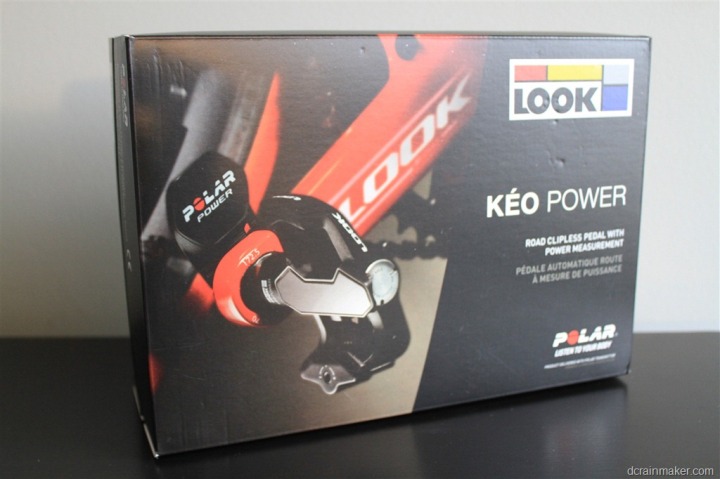
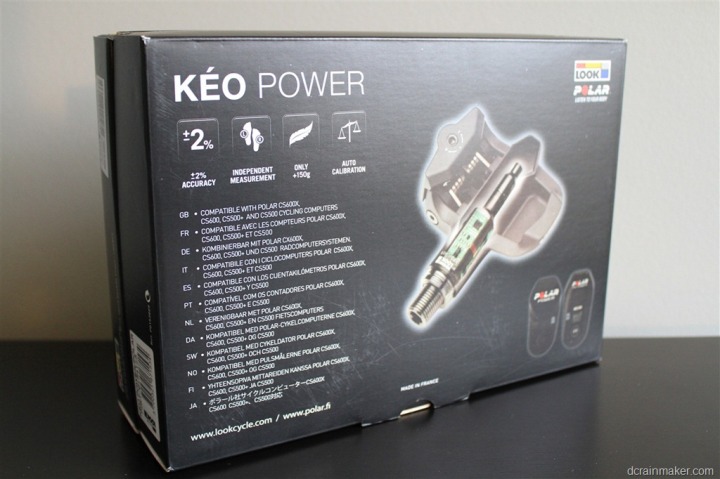
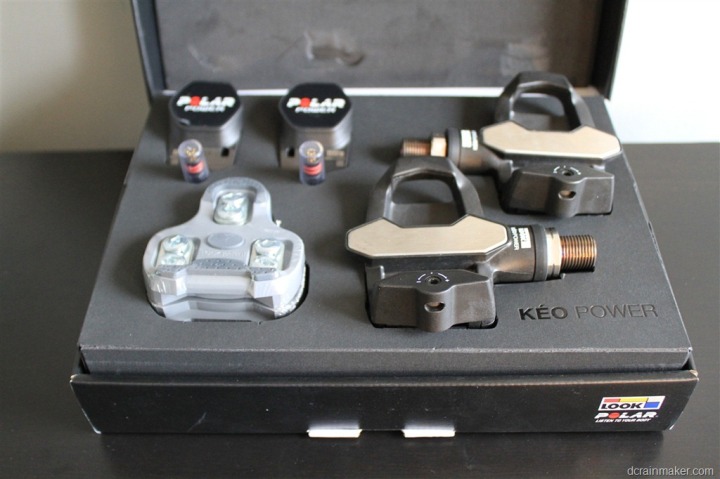
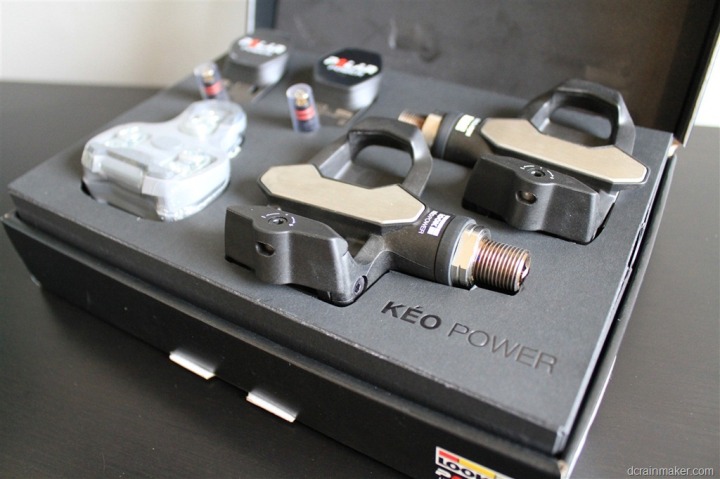
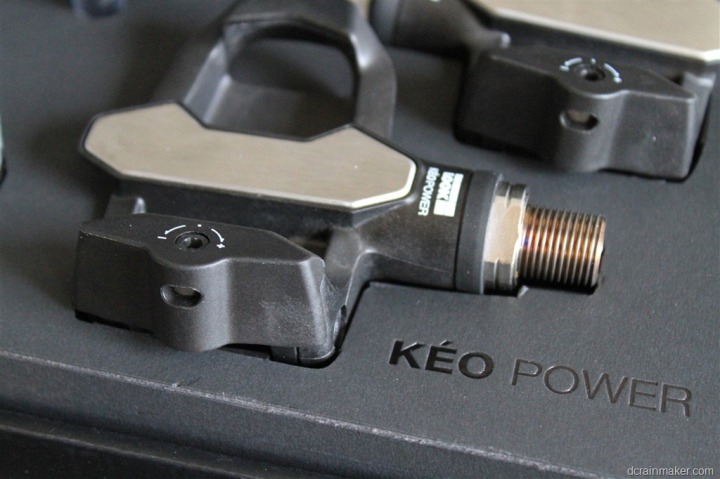
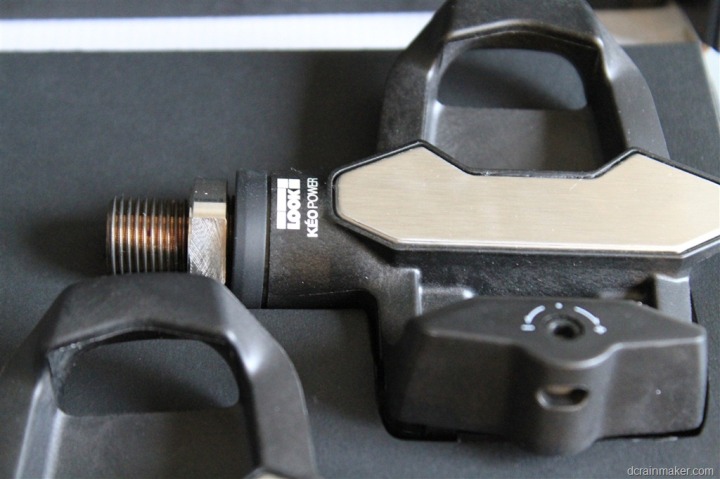
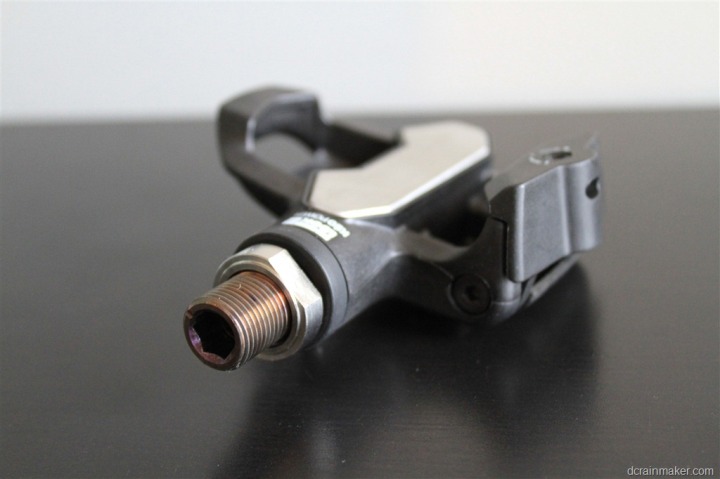
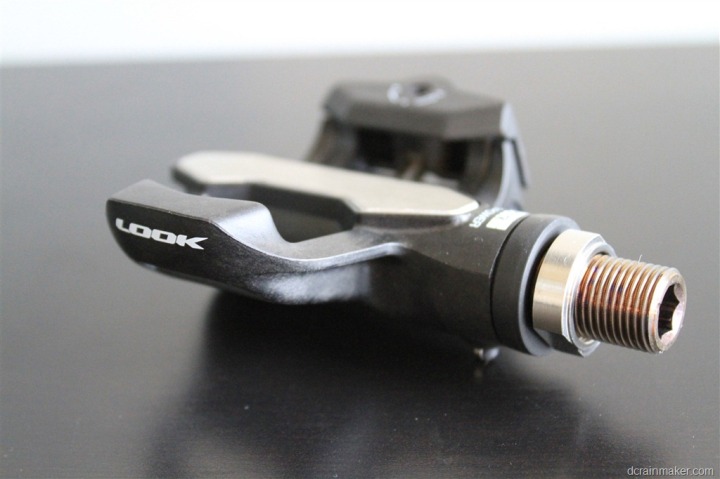
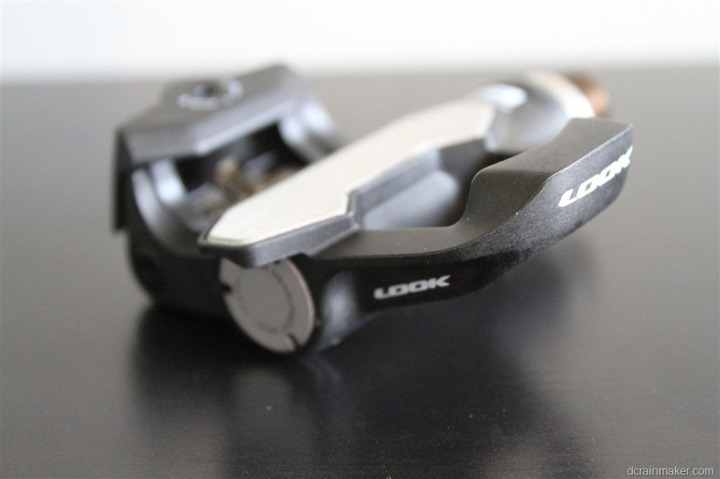
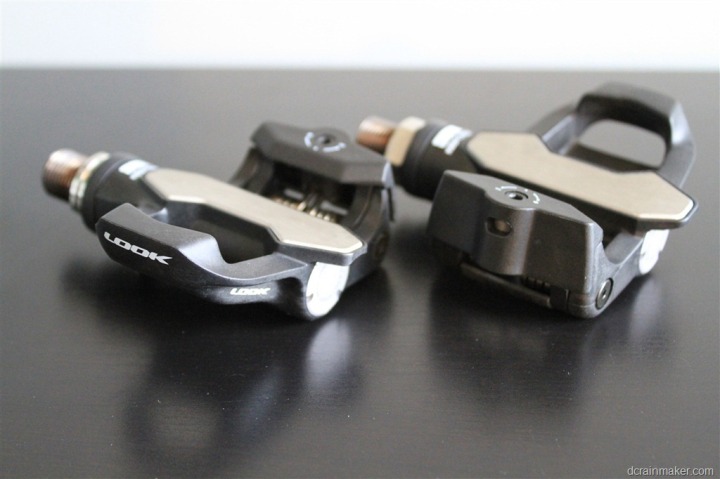
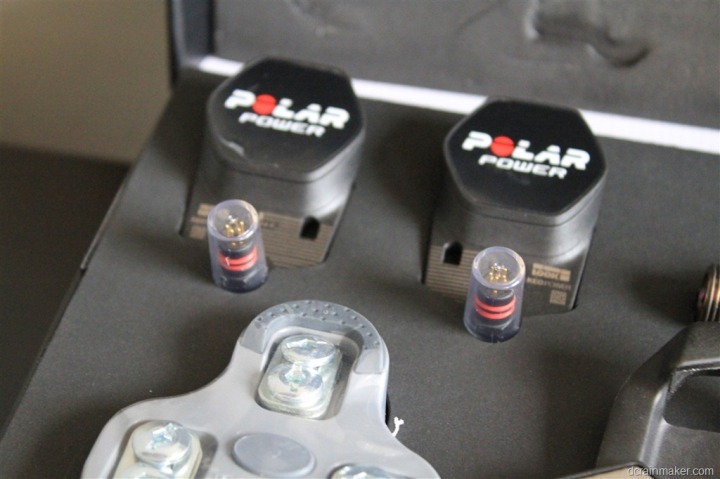
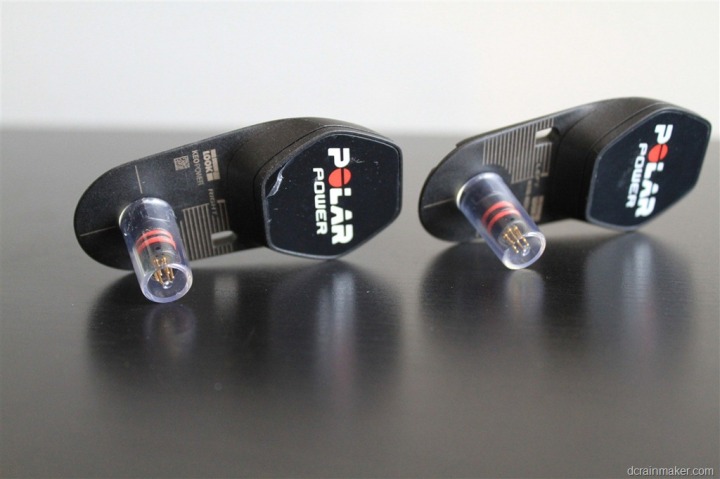
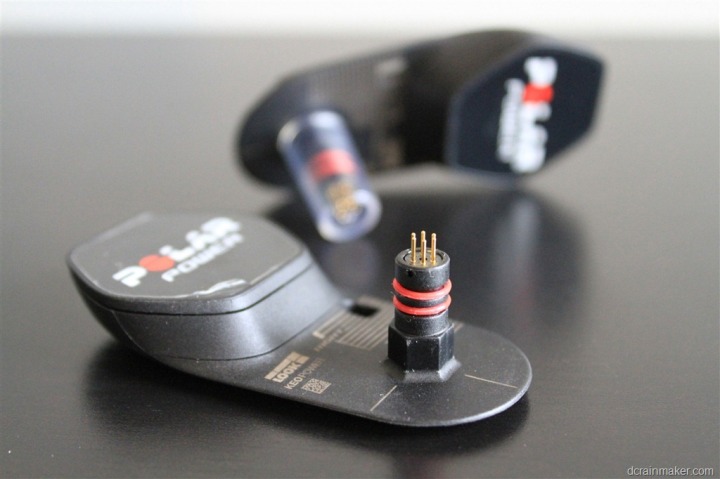

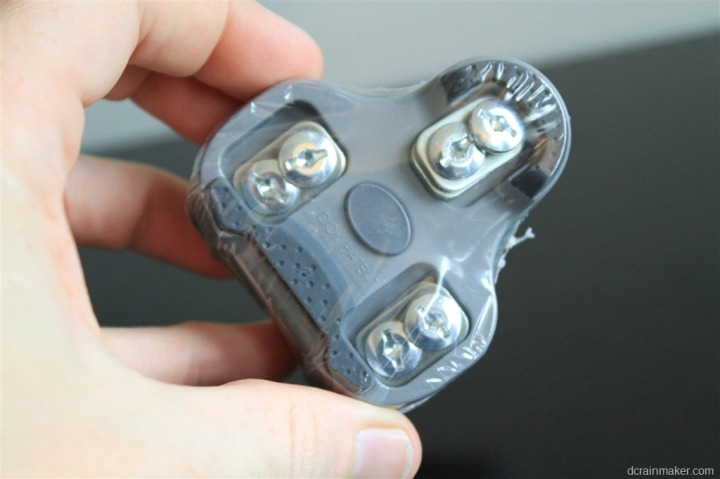
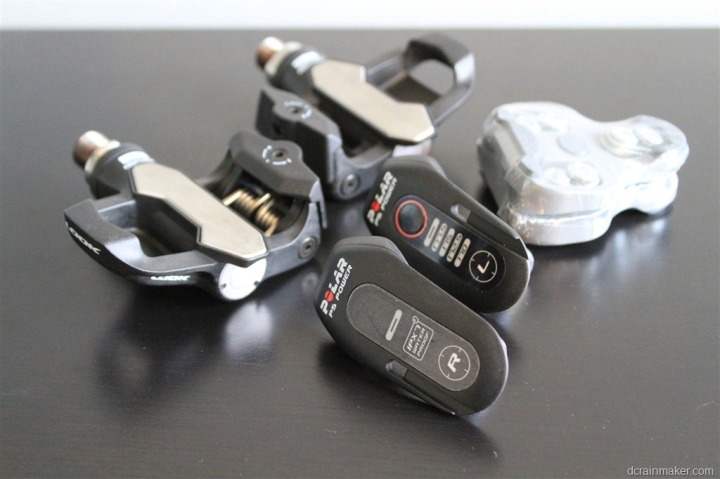
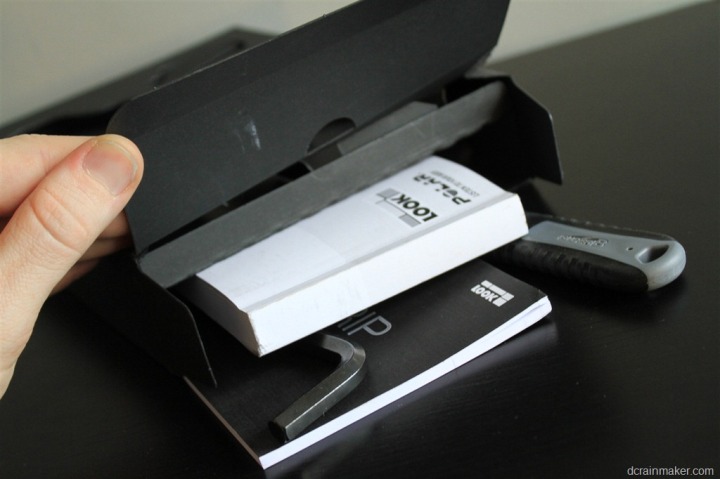

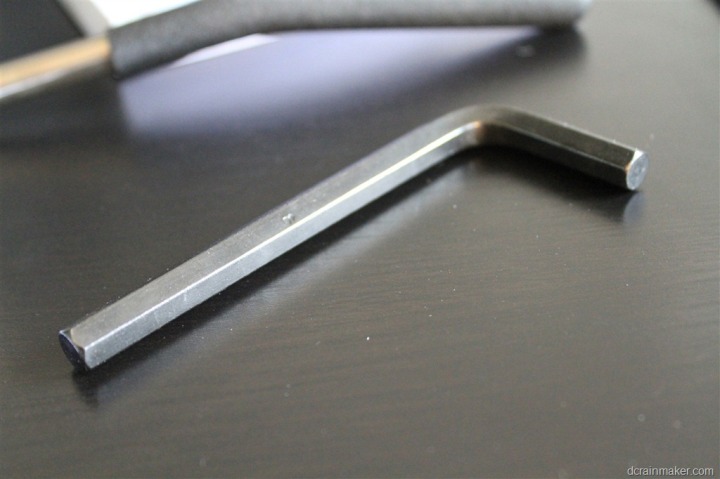
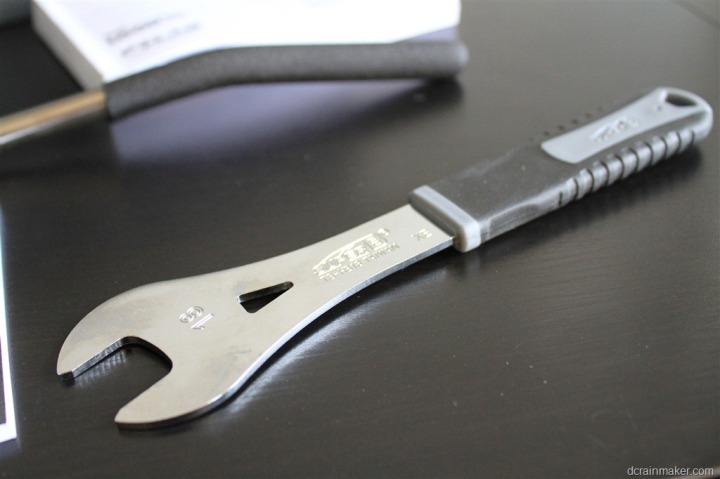
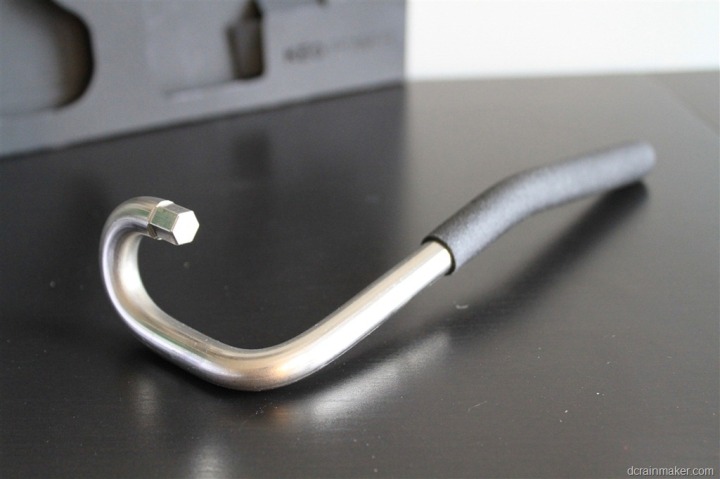
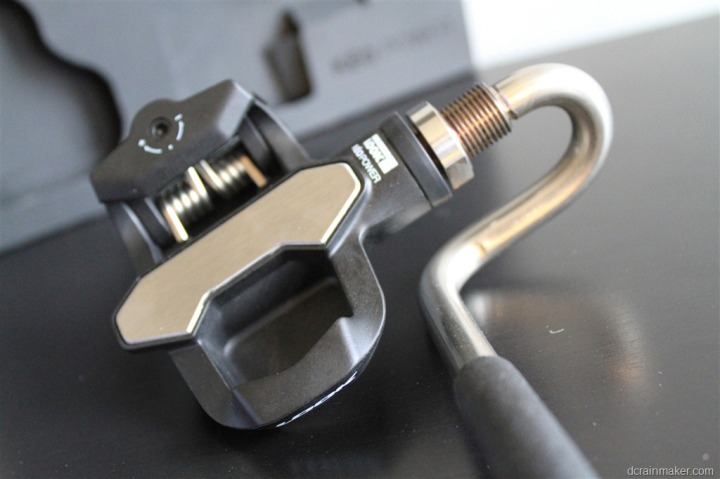
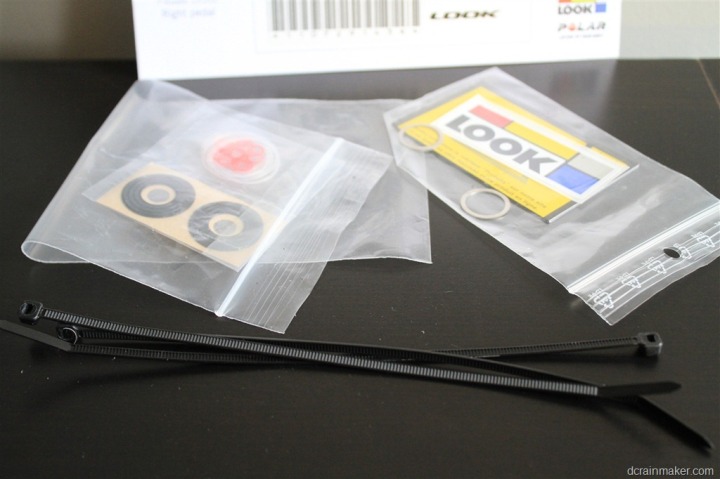
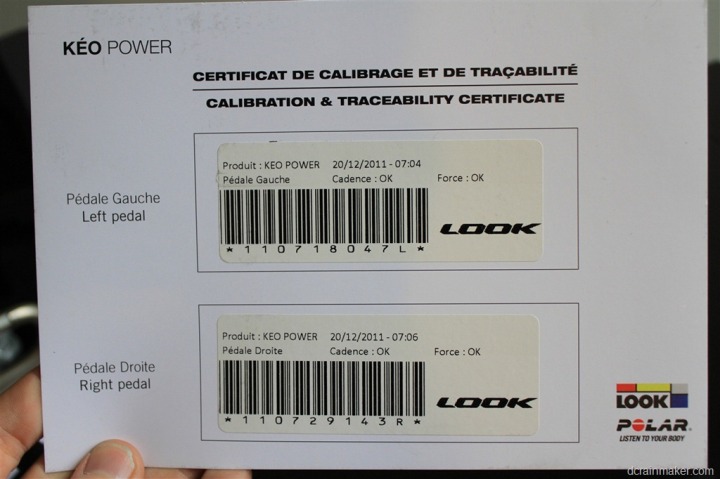
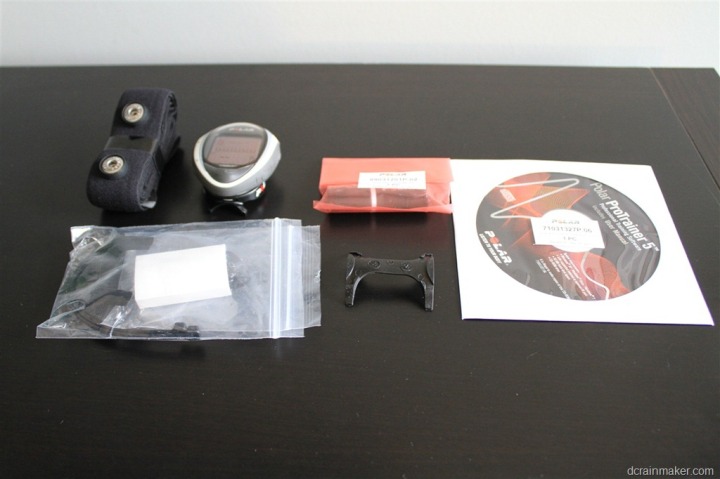
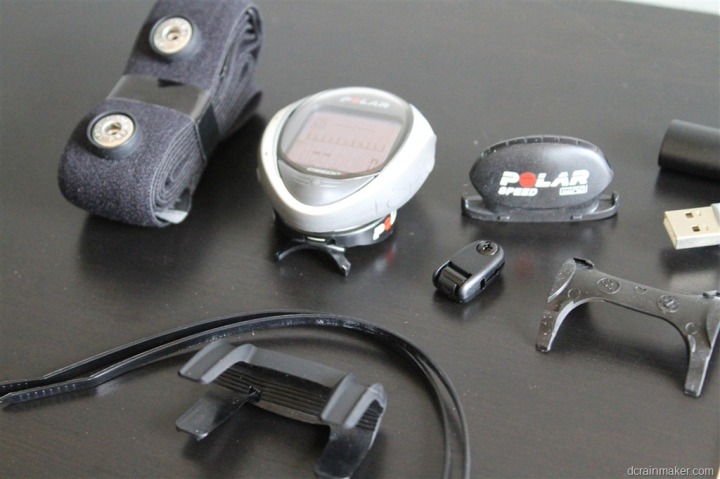

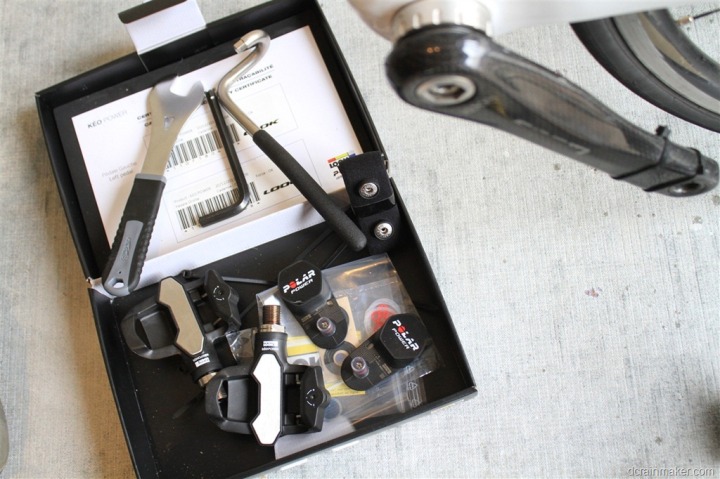
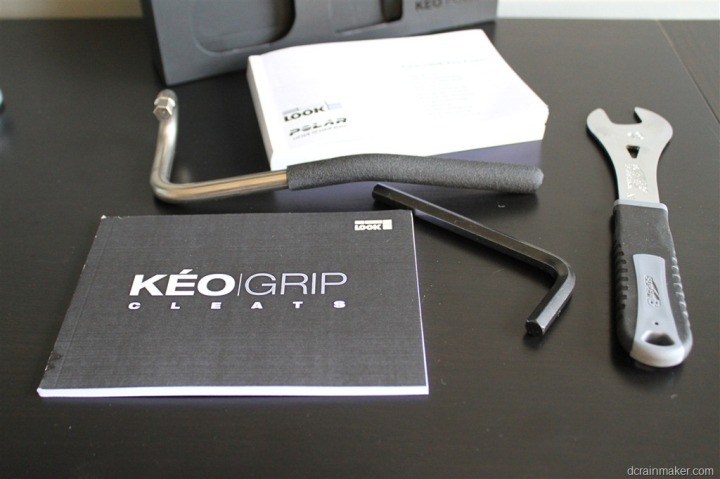


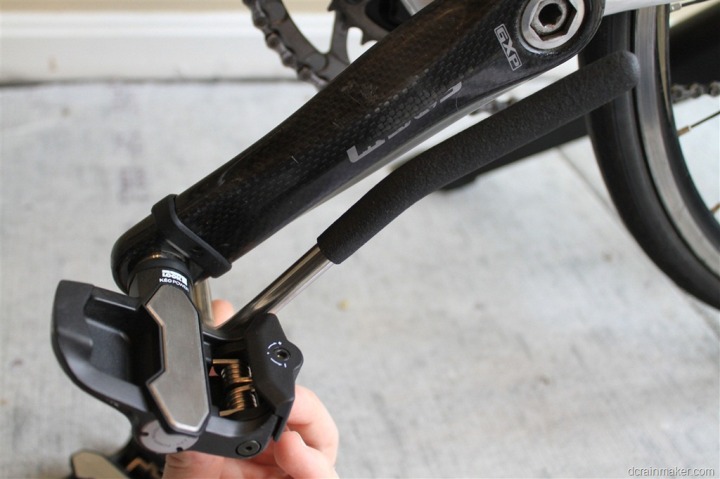

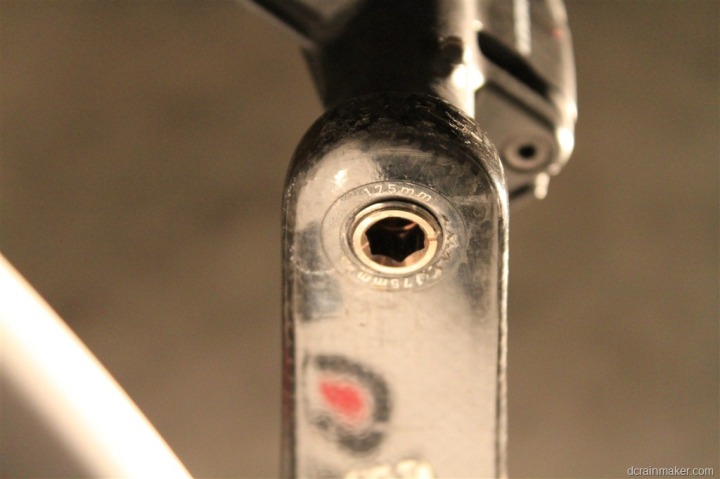

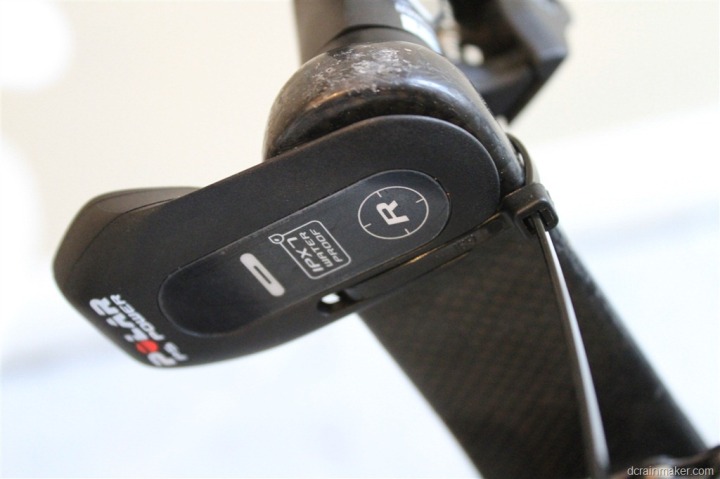
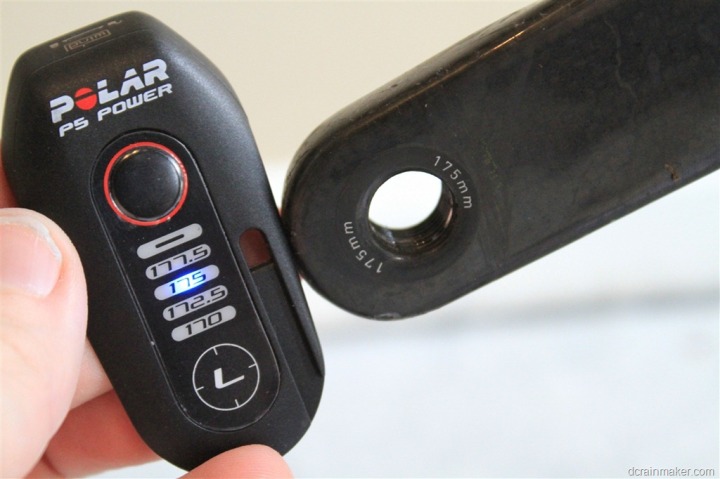
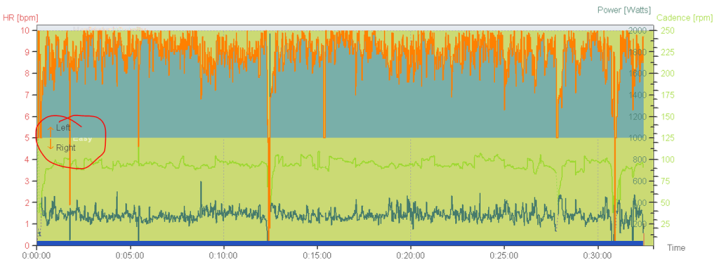
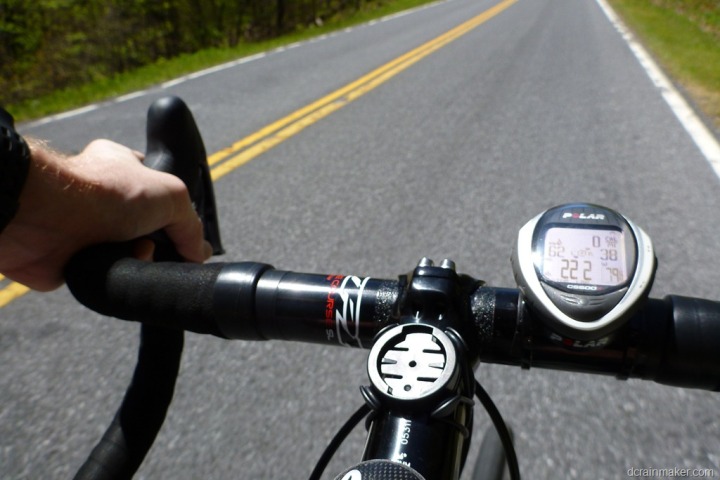
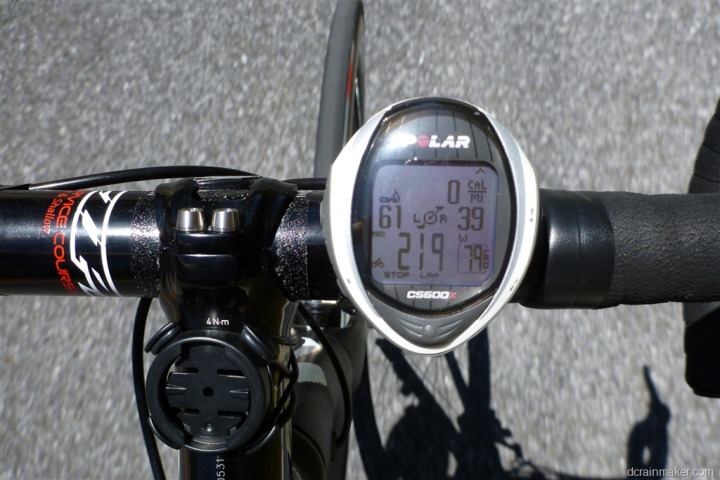


![joule20_display[3] joule20_display[3]](https://media.dcrainmaker.com/images/2012/07/polar-look-keo-power-system-pedal-based-power-meter-in-depth-review-87.png)
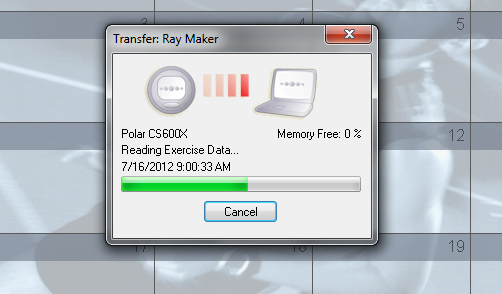
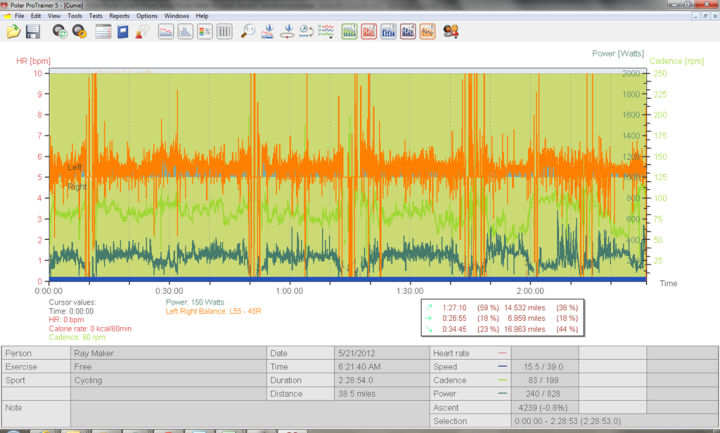



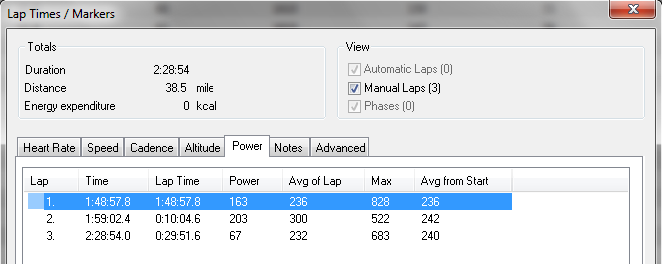
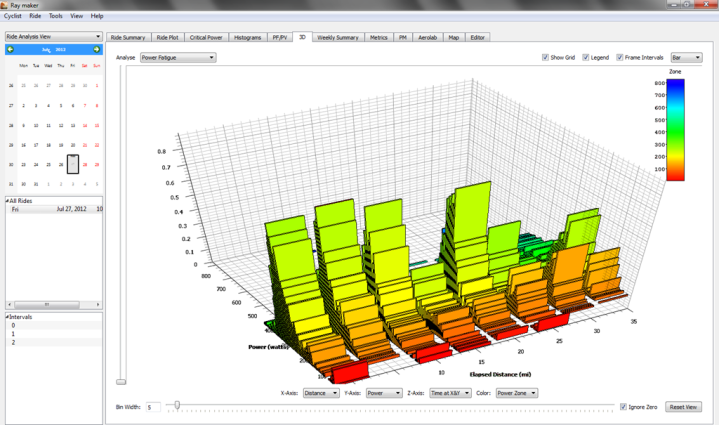







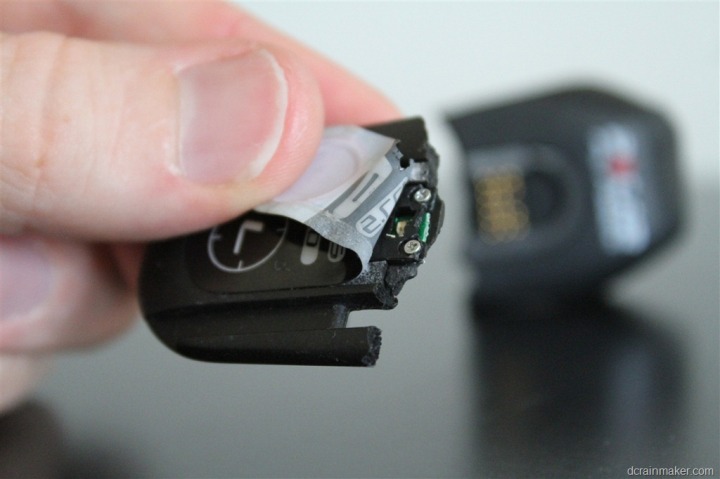
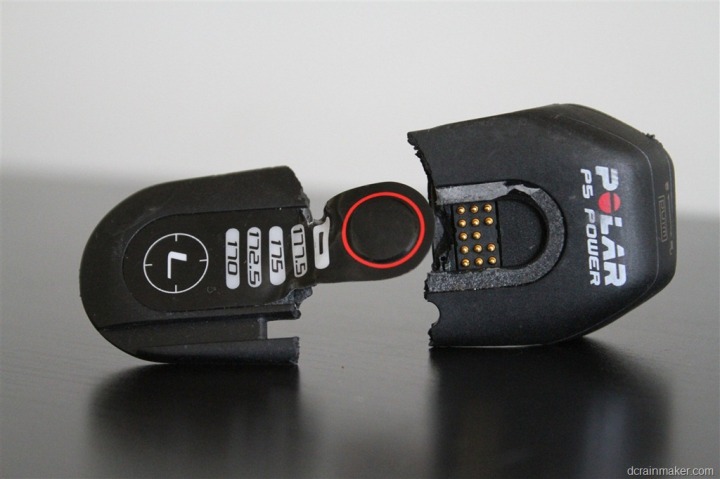

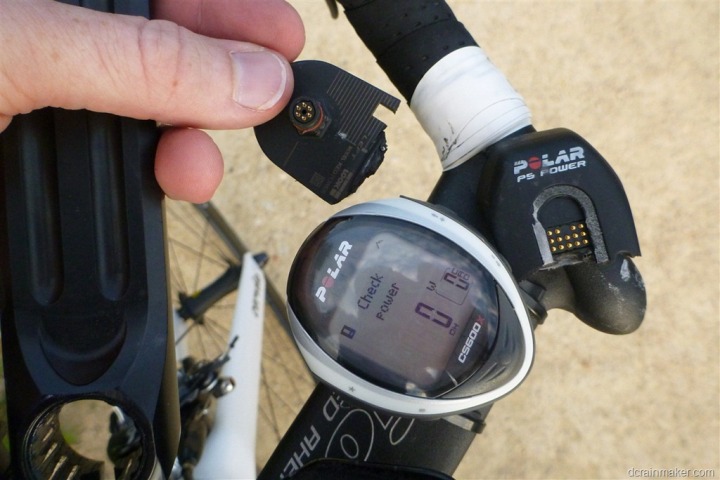
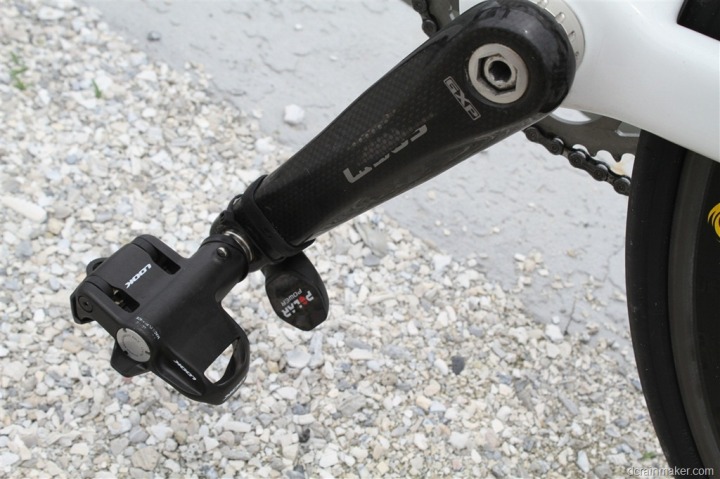






















I think that Polar’s resistance to open protocols will be the reason that these pedals will lose out to the Vector (if it is ever actually released!), too many people have Garmins and they are as unlikely to drop them as Polar are to go ANT+. Do you think Garmin/Cyclops etc are likely to inlcude or move to BTLE over the coming years? ANT+ seems well entrenched at the moment and it seems to do everything (except the native smart-phone connection).
You mention that the transmitter pods will be sold as spares with the possibility of a BTLE version down the line, from that I’m assuming that Look are expecting them to get damaged and as such sell replacements relatively cheaply. Do you think it would it be possible for an enterprising person to create/ hack a pod but with a ANT+ chip instead? Maybe Look will concede and do it themselves…
Ray, nice write up. Having also used Keo Power for going on 10 months now I do agree that they are a robust bit of kit and do a good job measuring power reliably day in day out. Look and Polar deserve some credit for this given the ongoing delays with Garmin’s vector. As you identified the head unit is a weak link, but over time I’ve actually appreciated its simplicity and reliability. Sure the polar CS600x lacks a wide range of ‘nice to know’ power metrics, but with the usual software you can capture most of them post exercise. The CS600x will display average power for a lap but only for a pre-programmed power zone based work out (not manual laps). It is worth pointing out the SRM PC7 also has a limited range of power metrics too. The Polar units and possibly the PC7 are due for a refresh soon so hopefully they will learn something from Garmin and Cycleops when it comes to customisation of displays.
Thanks for review.
Power meter comparison: Create a virtual elevation plot from each power meter’s data and overlay those – that would make comparison of where/when variances occur much easier to spot. And you’d no longer bound to time based plots (just don’t use GPS speed data, it’s not good enough for that sort of comparison).
Overall averages are generally not that great a way to compare power meters.
L-R power difference is way over hyped as something to be concerned with (heck, I should know!).
It seems to me that the major attraction of pedal based meters is portability between bikes, but with all the fiddling required, this unit doesn’t seem to pass that test. Seems easier to just swap cranks (or a wheel) over.
Hi – the RadLabor study that was linked to on the Polar website is the same as what was presented at ECSS in Belgium, no-one else has done a comparison yet.
Interesting that you’ve found a similar low PO outside compared with inside, perhaps variable cadence outside of a trainer environment causes some aliasing issues?
For your multiple power meter ANT+ .CVS recording. My IpSensorMan android app can recive multiple power streams and has an option to write the data to a .cvs file. The file dump is realy only for my own debuging and the format would not be ideal for what you want but modifications would be straightforward. IpSensorMan is normaly used with my bike computer app IpBike but I have a seperate app IpPeloton which uses it to show you your own sensor data at the same time as other heart rate and power data that is being picked up within range. I made a diliberate decission not to put logging of the none your data into IpPeloton but a similar app taking data from multiple ANT+ streams designated as your’s whould be a simple thing for me to do if your willing to use an Android device.
Hi Ian-
RE: Other companies including BTLE in coming years?
Yes, absolutely. Everyone I’ve talked to is indicating their plans to add BTLE support to their new products. Note, not replace ANT+, but add it as an option. There seems to be wide consensus that this won’t likely be an either/or race anytime soon – but rather doing both makes the most sense.
Even Garmin just added BTLE support on their newest fitness unit, the Fenix. Clearly a sign of things to come.
RE: Creative Person or Look adding ANT+ pods
I don’t think we’ll see Look at it, despite their occasionally wandering statements/rumors about their thoughts on the matter. On the creative person front, I suspect it may be too large a gap for most to bother trying, especially looking at the size and form factors. The skill sets and tooling required would be pretty significant, at least to make something of similiar build quality. What’s more likely though is simply a BTLE to ANT+ adapter. There’s a few in the works currently.
Hi Anon-
RE: Thoughts
Agree, definitely deserve credit for getting it to market and doing so in a seemingly bug-free method. On the SRM front, folks do at least have the option of going to other head units though, which is a big difference.
Hi Unknown-
RE: Using virtual elevation
It’s something I’ve considered. Looking at ifor’s app below (IpSensorMan), may really help here – at least in getting the data consistantly to be able to throw into a VE plot.
Agree on overall averages not being a great way, one of the reasons I included the graphs – though those are somewhat hard to read. VE plots would be better.
On swapping between bikes, I agree in general. As one who travels a fair bit and uses rental bikes – the ability to swap easily would have been key. But I found that there were so many aspects of the system that it made it a somewhat daunting task if I didn’t know what the end-state bike would be. From zip ties to crank widths, all things that could foil my plans.
Hi Xav-
RE: Studies
Hmm, I’ll need to dig a bit more. I also saw some other data one did (a reader also e-mailed me some interesting data too, all fairly consistant with the study and what i saw). Will get back on this one.
Hi ifor-
Indeed, this sounds very promising. I got your e-mail and will follow-up with you today. Thanks a ton!
Thanks all!
Funny. I’ve been keeping track of this website for a while because i also run and bike a lot.
I also own both a Polar cs500 and rcx5 (gps).
that said, a power meter is something i want to have for quite a while and as this is fully compatible with one of my 2 devices; so reading this review can help me to decide whát to buy.
But, after reading your review i decided NOT to go for polar and switch to the ANT protocol (end prob up selling the cs500, keeping the rcx5 for running) because the price/value for money rate you get with this product is absolutely ridicilous (obviously).
Closed protocol (the bluetooth update is not something i am going to believe in, you probable end up paying an additional fee), outdated software , NO gps (like an edge800) and this all at a price; Way too high.
Nice reading, thanks Ray.
Polars chain power metes have actually measured L/R for ages, and also power evenness during the revolution, which is pedaling smoothness. Live displayed. L/R is overrated according to me though.
You can use SportTracks and the plugin Custom Tracks to import and align many power sources in one container, and then use power analytics in other plugins to make good comparisons.
Cheers /Peter
I’ll second that opinion… I’d buy this LOOK pedals immediately IF it supported ANT+… Can you convince Polar to get off their high horse and support ANT+?
This way… I’m just waiting for Vector to be available and will buy it as soon as it comes out (or maybe Brim Brothers if they beat Garmin to the market).
On comparing ANT+ streams, I use SportTracks with Overlay and Custom Tracks plugin.
I’ve used it to compare my powertap with powercal here: link to teamrodrigo.com … at $99 for PowerCal it’s very hard to beat it for Value. Not as accurate as any other direct power meters, but… it’s almost the same price as a conventional ANT+ heart rate strap :)
When will you also be comparing PowerCal to your many power meters? ;)
I’m looking for a power meter for myself. I’m a pretty big cyclist, which leaves me with 2 disadvantages already. One, I need 36 spoke wheels, and Two, I am using triple mountain bike gearing for big hills. So immediately that puts PowerTap’s out of the question (only go to 32 spokes) and crank based out of the question too (only road gearing).
These would be great for me if only for the WIND crap. Since I use a Garmin Edge 500 I don’t want to downgrade to a CS600… so I guess that means I’ve got to wait for the Vector if I want any sort of realistic solution?
I don’t get this pricing scheme at all. Questionable advantages in L/R power, proprietary protocol and poor head unit features. Surely Polar understand that this price point is way out of whack. The only benefit I see is perhaps it is relatively simple to move between bikes. But as you note in your post it still takes some practice. For $2200 I can buy nearly 3 Powertaps and put in on a race wheel, training wheel, and my kids bike… At that point changing wheels is far simpler than this. Why does it justify a $1k+ premium in price?
Great write up Ray. Hope you’re loving Paris.
Looks like a cool product but a bit too expensive for my blood and I’d want the pedals to work with my existing head unit (ANT+ compatible) so didn’t have to buy a Polar.
BTW, even if someone were to buy this, they can’t do it using your link on Amazon. Not right now anyway. Their link says this:
Currently unavailable.
We don’t know when or if this item will be back in stock.
Thanks for the review, very helpful. I would have to wait to see the upgrades on the Look/Polar one and will be looking forward to your comparison to the Garmin pedal system when you do that.
Thanks!!
I have a request. There seems to be a lot of arguing in the last few days over the new CycleOps “PowerCal” “power” meter, which is just a fancy heart strap that does rough approximations.
link to teamrodrigo.com
You seem to do the most thorough sports reviews on the internet Ray (thanks for that!), so I was wondering if you would be able to put this product through your normal rigorous testing and put up a review?
Thanks!
Where is my ‘Pros and Cons’ section??? Well, not relly ‘my’ section but it is one of my favorite parts of a review.
Hi All-
Thanks!
Hi Peter-
RE: Custom Tracks
Interesting, that does seem to help a bit. My biggest issue is primarily around data collection and standardization. This does solve the standardization piece (since it can consume both Polar and non-Polar deviceS). That’s sweet! Ifor is solving for me the data gathering piece with an Android app, at least for ANT+ devices. Good stuff!
Hi Rodrigo/Anon-
RE: PowerCal
The folks at Clever Training shot me out the final retail Powercal, which arrived just ahead of me back to Paris. Will start playing with it. I’ve previously played with the beta versions – so looking forward to how the non-config version works out. With the app from Ifor, this will make ANT+ data collection easy. On the bike I’ll have: Powercal, PowerTap G3, Power2Max (or Quarq, depending on crank issues), and then while on a trainer I’ll rebroadcast out the CompuTrainer data (or whatever trainer I use that day).
General-
RE: Garmin Vector trial
They do have me high on the list, no worries there. Just a matter of when they feel they are close enough to final retail version.
Hi Tom-
RE: Pros and Cons
Ahh, that’s what happens when I finish writing at 3:30AM after a redeye flight the night before. I’ll get some added here tommorrow.
Thanks all!
-Ray
Hey I own a CS600x and the multi-sport RS800g3. I also own an iBike dash. I hated the chain system, the head unit is absolutely terrible (yes, the CS600x). I gad terrible trouble with the big clunky G3 gps transmitter and had to send it back numerous times.
That being said, I want to move away from iBike. The app crashes intermittently and I lose my ride. On longer rides, every miles you pedal is another percentage battery you’re taking away from your one lifeline. I hate that feeling.
I use trainingpeaks (when is that going to get an update?) with the iBike power that costs too much money and, in my opinion, feels cheap and inaccurate.
On days when its too hot to ride here around Sacramento, CA, I ride on my cyclops supermagneto pro. I can get up and ride in the morning and, if my bike is properly tuned, she wont wake up. The reason I bring that up is that the only time I really think the iBike is accurate is when I’m on a trainer and its correlating speed with the known resistance curve built into the trainer.
K so:
* Can I get some info on the new Joule with GPS vs the Garmin edge 800? I know you wrote a post but now that Joule is cheaper and it has GPS, its a competitor.
* When is WKO+ going to get an update or am I on 3.0 for nothing. Their online pay-per-month to have access to your own data thing is a deal-breaker (Liz Lemon: “That’s a deal-breaker, ladies!”).
I just found your blog about a week ago and I’m enjoying it quite a bit. Although, you’re ultimately going to convince me to buy a lot more outdoor tech than a man really needs.
PS I found this blog by searching for reviews on the FitBit. I know, riding carbon and having power meters should mean I don’t need a personal fitness tracker but I feel like I’m missing part of the picture without it.
PPS I’m posting like an idiot because of the almighty internet anonymity! There’s no way I would ever admit owning the Polar chain-based power system or admit that I’m looking for something like a FitBit.
Thanks for the excellent review!
The magnitude of the disagreement with Quarq isn’t encouraging to one or the other. An answer to the question of “why did Polar/Look get to market ahead of Garmin?” may well be because “Polar/Look’s standards for release are lower.” The additional responsibility assumed by Garmin for orientation determination, as well as “instantaneous” cadence versus cadence averaged around a pedal stroke, make Garmin’s engineering task more challenging. In any case, doubts remain about Polar/Look, and I’m certainly not buying one in the foreseeable future.
Sorry I should have qualified that, I meant no-one else in the scientific community has done a comparison. We have access to a pair of pedals here at our institution but there’s no point doing another study as Polar refuse to allow access to raw data for processing and calibrating.
Jeff Jones has done a comparison on bikeradar before:
link to bikeradar.com
He has some more detailed data graphs too:
link to bikeradar.com
Xav
Hi Anon-
RE: Info on Joule GPS vs Edge 800.
The Joule GPS is a competitor to the Edge 500, not the Edge 800. The Joule GPS doesn’t have the mapping capability that the Edge 800 has (downloadable/routable maps). Instead, it’s more akin to that of the breadcrumb features of the Edge 500.
RE: WKO+ update
I wouldn’t expect an update here. TP has made it fairly clear that the online world is the end-point. I think you may eventually see some client-side caching, but otherwise, WKO+ is somewhat end of life. For a better client-side option, consider Golden Cheetah (free).
As for the FitBit (heck, why not), it’s a great little device and amongst my favorites. The only issue I have is that it’s really easy to have it fall of your waist/belt and fall into bad situations (re: the toilet). But beyond that, I’ve used one on and off for months at a time.
Hi Xav-
RE: Raw data access
From a curiosity standpoint, if the goal is to compare the end-state consumer product to other end-state consumer products, why would raw data be needed?
Now, I’m not questioning why it’s wanted in general (I really do understand that, same goes for calibration) – but, from the perspective of purely comparing how it performs as a system, shouldn’t that be done in the same manner as any old consumer can do?
Really am curious from the academic side though on your thoughts, as they may differ from a product review standpoint.
@djconnel
I think another big factor is the Metrigear acquisition. I’ve been a part of companies that have been bought out before, and things turn into complete chaos immediately afterwards. New management, new business practices, new rules, etc. Then there is the old staff who gets freaked out and quits, and later you find out they were the only ones who knew how to do certain things. Then the parent company gets rid of ‘redundancies’, only to find out later that the people who got canned were the only ones who knew how to do certain other things.
Then management comes in and says switch from Speedplay to Look, so you have to redesign everything, but noone knows how. You bring in new people who have to start over from scratch because nothing was documented as well as it should have been, etc.
I bet it was a lot like that.
BTW – I posted about using VE plots for comparison, not sure why but is listing me an “unknown” under my Google login!
– Alex Simmons
Ahh, no worries Alex – good to see ya drop by!
ANT+ is owned/operated by a subsidiary of Garmin…so Polar adopting it is essentially them caving into a rival. Not going to happen.
With that said: with the ever increasing amount of BTLE devices entering the market I foresee ANT+ going to the wayside in the future…BTLE is an open-source technology available to everyone whereas only GARMIN/DYNASTREAM hold the keys to ANT+. Just watch. Give it a couple years.
It’s tough.
Long term, yes, ANT+ is going to be in a tough position. But I wouldn’t say that if Polar going ANT+ would mean they are caving to a rival. Keep in mind that while Garmin technically owns Dynastream – every other competitor of Garmin out there today except Polar uses ANT+. Really, it’s just Polar on WIND. And, as seen above, tons of people would go out and buy these pedals (or at least entertain the thought) if it were ANT+.
On BTLE, the market isn’t as easy today as a lot of folks want it to be. One of these days I need to write up a ‘Here’s why BTLE is further away than we think’ post. The biggest issue today is that by and large, none of the devices work together.
Take the Motoactv (the only BTLE watch on the market today). It works with the Wahoo BlueHR, but ONLY after nearly 2 months of incompatibilities. First it would pair, but not resolve HR, then eventually it worked. But it required both Wahoo and Motorola to work together.
Now you’ve got the Polar H7. Again, it doesn’t work with the Motoactv. So, the cycle starts again.
Then you have the Wahoo BlueSC. Again, doesn’t work with the Motoactv.
Why? Well, there’s no real standards here for how devices interact. ANT+ has what they call “Device Profiles”, which has a standard for each device type (i.e. Power, Heart Rate, Speed/Cadence combo, speed-only, etc… – about 30 or so in all).
Today, BTLE only has one officially used and ratified (the heart rate profile) – and even that isn’t implemented correctly by many.
We’re really a good 12-18 months away from this making much significant progress. But there’s no doubt it will, I’m saying just don’t count the chickens before they hatch. There’s going to be a lot of pain and suffering and device incompatibilites before then. Devices won’t work with each other like advertised, and consumers will be ticked about it.
I certainly hope it gets sorted out sooner rather than later – but until then, I continue to believe the best option is simply for companies to offer CHOICE, like Motorola did. They put both an ANT+ and BTLE chip in there. Let the consumer decide, and don’t pigeon-hole them in there (btw, we see this with Garmin’s most recent watch, the Fenix).
Anyway…enjoy!
Hi Ray
I think the problem comes when you look at the inherent variability within power measuring systems. Even an SRM Science has an accuracy of just under 2%, so simply comparing two systems (ie. SRM vs. Polar) won’t give you a true idea of which is more accurate or not.
As the end user can quite easily compare the two, swings in either direction in power output of anything up to 10w over a ride may look bad, if it’s not a consistent difference, but in reality both units could be within spec.
If someone could succinctly say – “yes, the Polar system is ~3%” or similar, then we wouldn’t mind so much. But as Polar won’t/can’t provide access to the raw data at anything higher than 1Hz, we can neither calibrate them, nor examine whether there is a cadence effect due to the recording frequency. This is my guess as to why there are differences in and outdoors.
I can sympathise with the guys in Freiburg, and they do great work there, but comparing the Polar vs. an SRM is not the same as static or dynamic calibration, as the SRM is not a piece of calibration equipment, which I think some people tend to miss.
It’s interesting that no Polar rep I’ve spoken to in Europe can answer the technical questions I have regarding sampling frequency and torque measurement during the pedal stroke, and I’ve been in e-mail contact with a fair few! Someone, somewhere, has made these pedals and devised calibration procedures and a method for processing the data, as a researcher it’s slightly frustrating (and also a little worrying) that there is no possibility of access to it, even the guys at Freiburg who work very closely with Polar.
One other difference between the Polar and Vector systems is the direction of force measurement. The Vector measures in all three planes (that’s my understanding), whereas the Polar’s eight gauges are arranged in pairs of four, measuring only in the saggital and transvers plane (ie. not laterally towards and away from the bicycle). The force pedals we have constructed in our laboratory have shown that there is force applied in this direction. It is small but may be another reason for the lower power calculated for the Polar pedals.
Xav
Xav:
Well, you could do a cadence-crank torque comparison for those segments where the Quarq and Look were most aberrant to see whether the difference was mostly due to one, or the other, or an “equal” split of fault. And, if you were to do VE profiles of the two then a comparison with a known true elevation profile under calm conditions could provide you with a way to evaluate accuracy.
Ray:
I’m sorry I missed you in Paris; I hadn’t known you’d moved. We’re out of Paris at the moment but we return during the week of 19 Aout for about a week — then I’m back to California. If you can get some .csv files of your outdoor ride ready I’d be happy to do a VE comparison. Perhaps in return you could do a me a little favor: you could ride this course with the Quarq and the Garmin: link to tinyurl.com
Hi Robert!
I’d be happy to give that ride a shot next weekend (headed to London tomorrow). Do you need it on the Quarq specifically, or? Currently I have a PT, and a P2M on there.
-Ray
Ray:
Merci beaucoup. All I really need is a semi-accurate second-by-second elevation reading for the course, as one might get from the Garmin. I don’t really care if you use a Quarq or a PT.
I got it last week and was wondering about the following. i get readings on the L/R balance that seem very high with as much as 70/30. Although I had my hip replaced 6yrs ago on the right side (so being slightly weaker makes sense) that seems very high. Also when I intentionally work the right leg much harder and barely use the left i can only get it to about 45/55. Reading your review I noticed in the pictures that again there was a dominance (stronger) on the left. Have you heard or seen any feedback where this is reversed, i.e where the readings are 30/70. I will ask a few of y friends with Keos to hop on my bike and see their results but have not had a cahnce to do so yet.
Another small issue I have encountered is that the right unit will very slightly touch the upper chain as it passes but will pass freely on the lower. I have a DI2 gruppo which Id presume to be fully compatible. thanks and BTW a great review
one more. when transferring the data to the Polar software the max Power displayed is much less than the max power displayed for the data uploaded to the polarpersonaltrainer website. In my case it was around 700 vs 1200 respectively. Any ideas
Hi,
I just got my Keo Polar Pedal. A question. Does yours has that tight sealed which can cause the pedals not to rotate freely and giving out squeeky noises when pedalling(not due to cleat-pedal interaction). Mine can’t rotate freely and they squeek!
Funny, mine didn’t initially – but did later on after a hard ride in the rain. I took them apart and re-cleaned that area and then the squeeky went away.
i had the squekuing and tightness on the pedal as well. the tightness seems to subside with time as you ride (though my right side is still quite tight and the left not as smooth as my old keo’s) and the noise i got rid off by using a penetrating lubricant.
have any of you had the issue with the upper chain rubbing?
When you say upper chain – are you referring to the chain while on the largest gear in the front rubbing with the pod?
Sorry, just clarifying.
I haven’t but just curious.
Few thoughts for other posters…
Chain rub with the P5 transmitter should not occur if set up correctly. Key here is to ensure the axle does not protrude through the crank on installation. If it does it will force the transmitter clear of the back of the crank (won’t sit flush) and potentially cause clearance issues with the chain. Back the axle out (making sure the notch is oriented correctly) and use the lock nut to tighten.
On accuracy and unusual L/R balance readings… Take care to set up the pedals so the notch is perfectly perpendicular to the crank. Even if it is a few degrees out it will lead to inaccurate readings. Perfectly aligned it will give reliable and consistent data (mine are consistently within 1% of my SRM indoors and out). After trying a lot of ways to get the alignment right – my advice is to use the included tool, but as there is some ‘wiggle’ room when torque is applied when tightening, the correct alignment will occur when the tool perfectly intersects the BB when NO torque is applied. Applying torque to the tool (clockwise and anti clockwise) should result in it deflecting an equal distance each side of the BB. Look should design a more precise tool for the task, but if you are super careful the pedals will deliver accurate and consistent data.
Head units not great and desperately in need of an update but are reliable and display basic data well.
Ray, that’s a great write up! You must have a Ms or Phd in mech or E engineering. Have you ever considered submitting your research to a peer reviewed periodical? Physics Today, NE journal of Med, or a sports physiology publication? Is cutting edge stuff your doing and you’d reach a greater audience. I bet Polar and the other manufacturers would sponsor your paper. Keep up the great research you’re doing, I haven’t seen anyone do as thorough a job. Oh, if you really need that app, I know some great developers who might help, but they’d need to get paid.
Ray, that’s a great write up! You must have a Ms or Phd in mech or Electrical engineering. Have you ever considered submitting your research to a peer reviewed periodical? Physics Today, NE journal of Med, or a sports physiology publication? Is cutting edge stuff your doing and you’d reach a greater audience. I bet Polar and the other manufacturers would sponsor your paper. Keep up the great research you’re doing, I haven’t seen anyone do as thorough a job. Oh, if you really need that app, I know some great developers who might help, but they’d need to get paid.
Thanks Bill.
No degree (of any sort). ;)
I hadn’t ever considered submitting it. There are folks in labs with far more time than I to do comparison tests. Wish I had the time and resources to do that kind of work!
What do I do about my track bike with 165’s ? SOL? The music industry agreed years ago with the MIDI protocol …come on manufacturers , get it together.
polar cs 500&cs 600?nice
I just purchased Power pedals two days ago. They worked great yesterday, then today my bike fell over on the right side. There is barely a scratch on the pedal. Now I am getting really low power readings on the left and really high on the right, anyone have any experience with this?
Hmm, it’s hard to calibrate other than that initial power-on calibration. I would look at perhaps re-installing them and validating everything is still lined up.
What is the minimum distance needed between the crank and the chain when on the big chainring and the 12 sprocket so not to damage the transmitter?
Unfortunately the unit has been sent back, so I don’t have it anymore to measure that. I’m sorry!
Biggest drawback for me is lack of power smoothing. I was wondering if this is the case only, when recording rate is set to 1s. Does setting recording rate to 3/5/15s automatically smooth power readings to 3/5/15s?
My cranckset is 165mm in my TT. How can it works? If i put at the 170mm mode and its show me with wrong infos… how big will be that wrong info? I’ve already bought one, but dosn’t came yet.
Unfortunately it won’t work. Those are the only sizes it will accept. :(
Hi Ray,
I have had the pedals now for over a year, did you ever experience whilst riding a complete shut down of the pedals mid ride? This has happened to me on a number of occasions (shut down is always after all the blue and red lights flash). Once turned back on they are always fine after that (with no noticeable power reading differences before or after), but if it does happen it always seems to be after 1 hour riding.
For training it’s a mere annoyance, but as it has happened in an Ironman and a half Ironman it costs time….not good.
On the Polar support they blame the installation, but after a year one gets very used to installing them as I swap them between 3 bikes, road/TT/winter and I am very careful on alignment.
I remember one such issue early on, before the recall, but not post-recall.
Do by any chance you still have those broke piece beacause i broke mine and i may be able to fix it only the plastic is broken every connector stile fine
i will wait for your answer!
thx
No, everything was sent back to them.
Hi there!
I am from Brazil and I need some technical support from you.
I hit my right Polar Look Power Meter pod unit on a rock and seems to be seriously damaged.
I was not able to find any authorized retailer here in my country. Can you recommend any place in US to solve this problem?
I am looking forward to hearing from you.
Tks,
Marcio
Typically speaking any shop that sells Polar gear in the US can order parts for any Polar product. The challenge will be getting one of them to sending you a part in Brazil (oddly enough, where I am this week). The extremely high cost of imports means many are fearful of doing so.
Hi Ray,
just wondering if you heard any progress about look keo power Bluetooth, now that V650 is out
Gaetan D
Yup, see this: link to dcrainmaker.com
Hello Ray. There are dates for the Bluetooth pods on the Polar Keo power pedals. But I can’t find them anywhere. Are they available or not? If not do you have any idea as of when?
They started shipping back in November. Retail availability is somewhat slim, but most places that carry Polar products can just special order them for you.
Article about the “Validity and Reliability of the Look Keo Power Pedal System for Measuring Power Output During Incremental and Repeated Sprint Cycling”
link to journals.humankinetics.com
Sigh.
I never get why people assume the SRM can do no wrong. Comparing to just the SRM, and then concluding “It was different than the SRM”, means just that…it was different. Not that it was right.
I have an irrational distaste for zip/cable ties for expensive equipment. I use them on a cheap-as-chips cycle computer for my old runabout and I can just about tolerate it. But when spending much more, and applying it to my Bianchi, my OCD just kicks in big time.
Once they add BTLE and dual-sided metering, LIMITS may be of interest. The black version would even sooth my OCD.
can somebody tell me
if the new Bluetooth version of the pedals has also a limit of crank length
=> max 177.5mm or now unlimited???
I have the Look Keo Power pedals for about three years, and never experienced any trouble, until recently. After an overhaul of my entire bike, I installed the pedals, but everytime I start the calibration procedure the sensors start to blink red and blue with high frequency (twice per second). I changed the batteries for brand new ones I set the crank length anew several times, but the problem doesn’t go away. Does anyone know what is the matter?
Thanks in advance.
For those of you in Australia, according to Look, Groupe Sportif (the Australian Distrubutor) says (according to Look) “the pedals cannot be imported into Australia due to certain wireless regulations. The pedals would need to be validated at very high cost and lengthy process”.
Given all ANT+ devices require certification from the ANT+ alliance, it makes me wonder. This sounds like a crock to me, especially given the 100’s of ANT+ transmission devices on the markert which (I assume here), importers have not spent $$$$ on to validate.